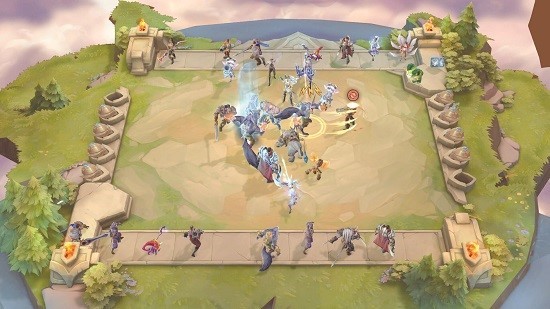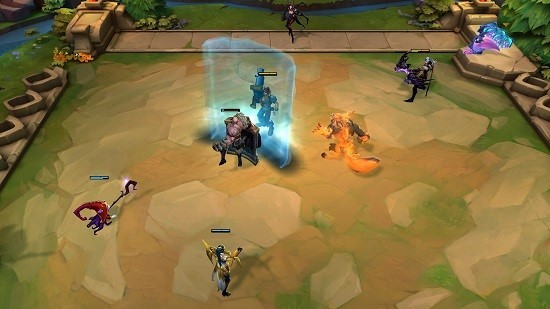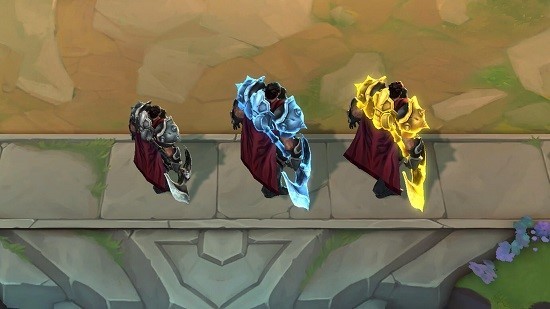Are you a fan of strategy games? Auto-battlers? Perhaps even
League of Legends? Well then, look no further than Riot Games’ Teamfight
Tactics.
What is it?اضافة اعلان
Teamfight Tactics, commonly referred to as TFT, is an
auto-battler game that the developers of
League of Legends, Riot Games,
published. TFT is heavily influenced by the Dota version of the game, Dota Auto
Chess, which is no surprise seeing how LoL was also influenced by Dota itself.
Each game has eight players who form their own team comps
and compete to be the last one standing. The premise is straightforward,
similar to other Auto Chess variants: you begin by selecting a unit, with a
clock counting down while all the players fumble about trying to pick up their
item of choice. After that, you enter a combat phase where your selected unit battles
creeps or another player's squad, either winning additional gold or taking
damage.
 (Photo: IGDB)
(Photo: IGDB)
This is where the first crucial part of the game comes to
light, as you are expected to position your characters on a grid-like board
(hence why it’s often referred to as a variant of chess) to best utilize their
abilities. The more you win, the more gold you earn as your streak goes up, and
the same formula is applied to your losing streak as well.
This leads to a chaotic cluster requiring you to make quick
decisions, whether to spend gold in the shop (where you can purchase up to five
units) or reroll said shop to obtain a more favorable selection of units.
As your first getting into TFT, you start to notice that
there is a learning curve but trust us, the more you commit to it, the easier
it will get.
The different
compositions, items, and champions
There’re a whopping 58 units that you can utilize in TFT,
each with their own specific role, abilities, stats, traits, and item
combinations. To try and keep this as simple as possible, let's begin with
traits, as they will most likely be the first thing you try to get used to.
Traits in TFT provide your entire board with specific
bonuses, whether you’re going for the “clockwork” trait that provides your team
with additional attack speed, or you’re going with the mutant trait that
changes every game of TFT you play. There are 27 traits available for you to
fidget around, leading to an endless array of compositions to try. Be warned,
as you won’t always get to play the traits you feel like playing, as it solely
depends on what the shops provide you with.
 (Photo: IGDB)
(Photo: IGDB)
Now let’s talk about roles; TFT follows a similar principle
to League of Legends, so if you’re familiar with it, then great! But for those
who don’t play MOBA games, you can sum it up into three main roles. Tank,
Ability Power champions (AP), and Attack Damage champions (AD).
Tanks are usually placed in the front line to take the brunt
of the damage being dealt to your backline, allowing them to dish out damage on
the opposition. AP and AD champions are your damage deals and support
characters. If you really want
to delve into the nitty-gritty of each individual champion, a great place to
look would be
here.
Finally, let us talk about statistics and item combos. Every
item in the game consists of two specific components to craft, each providing
particular passive abilities and a boost of statistics for the champions you
choose to use them on. You start to get the hang of where each item is supposed
to move, so don’t be discouraged if you end up making a mistake or two.
Why on earth would I
torture myself?
It’s simple, and it’s great fun. It’s satisfying to see the
team you’ve curated take down everyone else’s, and don’t get me wrong, it won’t
always go your way. The one problem many have about TFT is how heavily it’s
influenced by RNG (Random Number Generation).
 (Photo: IGDB)
(Photo: IGDB)
You could play an entire set and get purely defensive items
drops or just a bunch of item components you literally can’t use. The shop is
not your friend either, as you could have a very good strategy going for you
but have no luck finding a single unit that compliments your current
composition. And while you might think this is fine, right? Well, when games
are reaching their final stages, and you have nothing of value on your board,
as opposed to the enemies you’re facing, who are fully stocked with incredible,
well, everything, your gears are about to be grinding at that point.
But thankfully, this isn’t
always the case, and the majority of the time you’re playing TFT, you’re
probably going to have fun one way or another.
Read more Gaming









